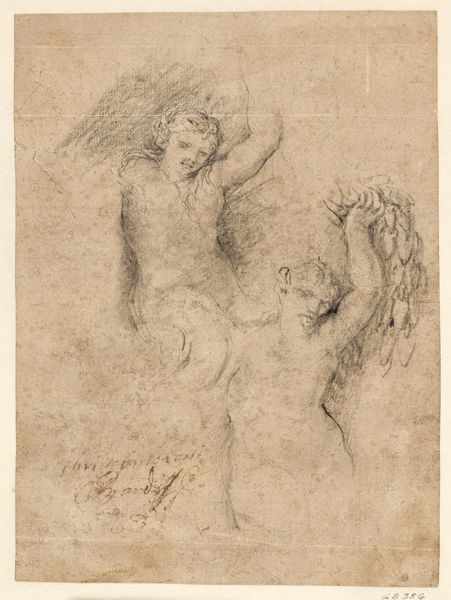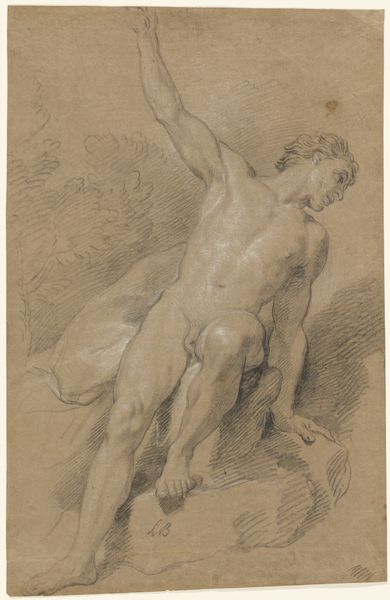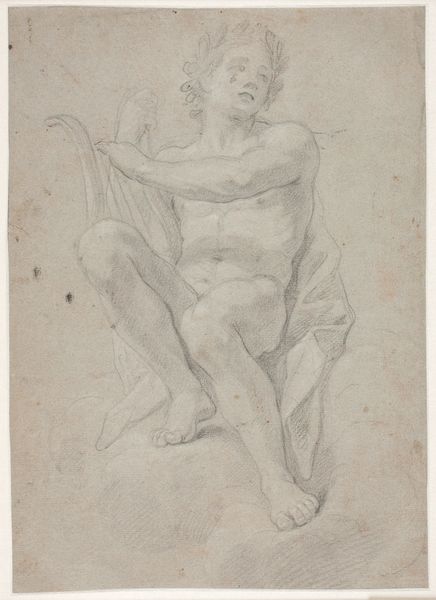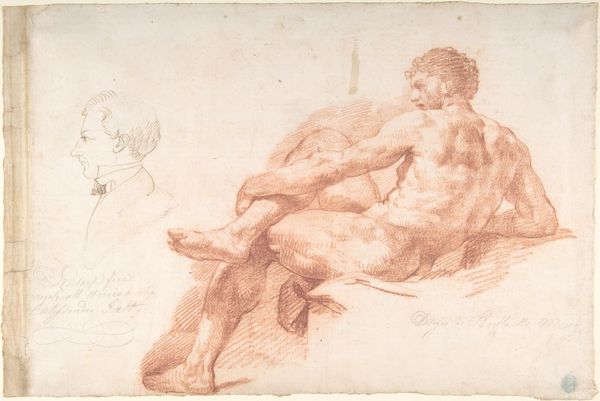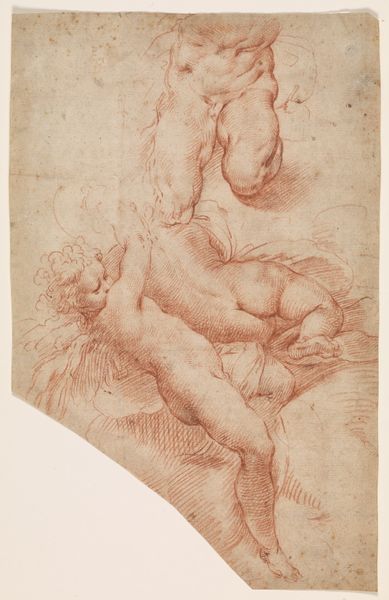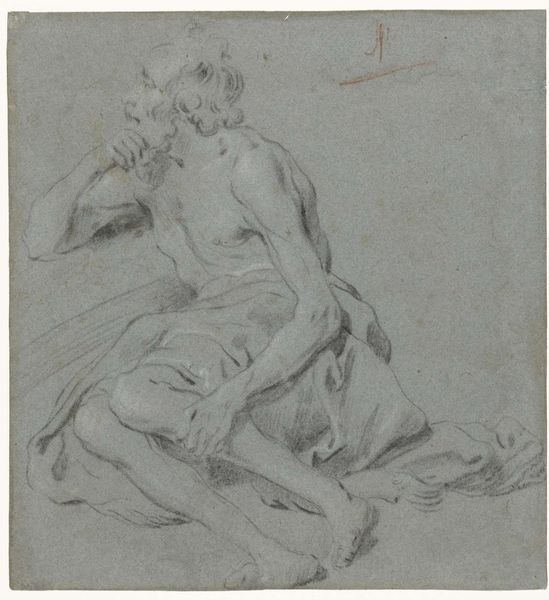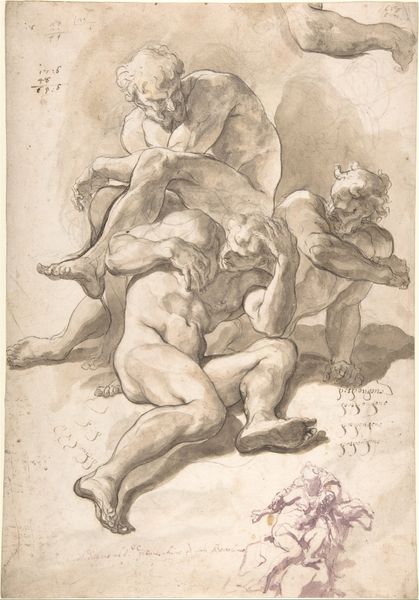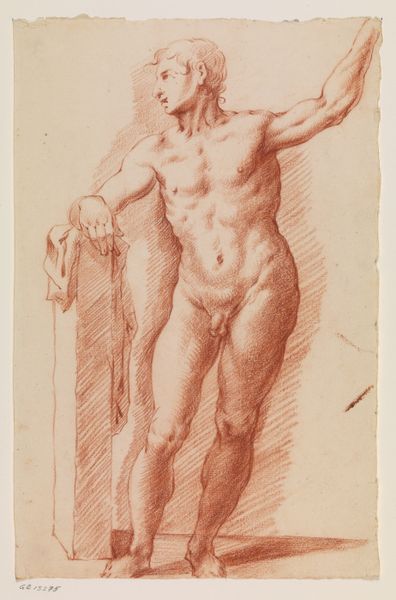
Saint John the Baptist as an Infant Possibly 1770
0:00
0:00
Dimensions: sheet: 28.7 × 26.2 cm (11 5/16 × 10 5/16 in.)
Copyright: National Gallery of Art: CC0 1.0
Editor: This drawing, "Saint John the Baptist as an Infant," possibly from 1770 by Joseph Wolfgang Xavier Klauber, uses charcoal and pencil to depict a rather pensive child. The lamb adds a touch of sweetness to the scene, yet I am left wondering about the deeper story at play. How do you interpret this work? Curator: The power lies in the layers of symbolism embedded within this seemingly simple scene. Notice the infant John, not just as a baby, but holding a reed cross, already foreshadowing his future role. Editor: So, the reed cross is a signifier? Curator: Exactly! It acts as a powerful emblem of sacrifice and his eventual martyrdom. Then we have the lamb. Can you think what that symbolizes? Editor: The lamb represents innocence and, I suppose, a prefiguring of Christ as the Lamb of God? Curator: Precisely. Klauber masterfully combines these established symbols to create a narrative that goes beyond a mere portrait. He invites us to contemplate John's destiny from his earliest days. The Baroque aesthetic invites contemplation. Don’t you feel drawn into the drama of it all? Editor: I see what you mean; I was drawn in by the tender rendering of the child and lamb and initially missed those allusions. Curator: It is a testament to how images speak to us on conscious and subconscious levels. Reflect on how even seemingly innocuous depictions often carry cultural memory within them. Editor: I now appreciate the symbolic weight carried by seemingly simple artistic choices. It enriches the artwork and definitely transforms my interpretation of the piece.
Comments
No comments
Be the first to comment and join the conversation on the ultimate creative platform.
